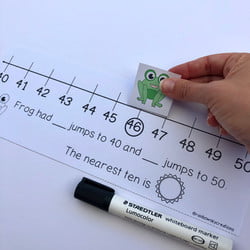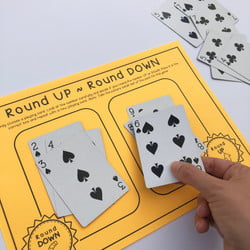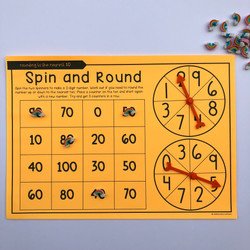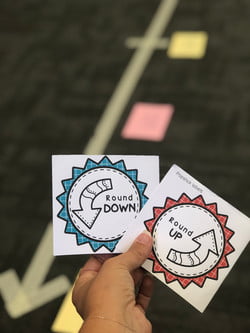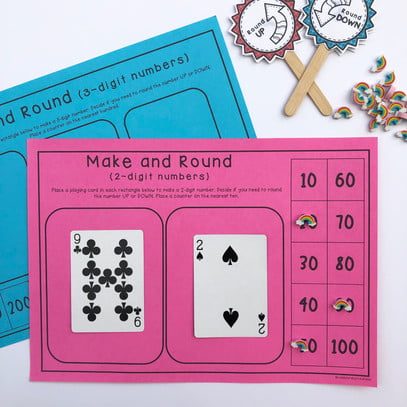Rounding numbers always seems to be a skill that my students find challenging year in, year out. I thought that this probably isn’t just limited to my classroom and perhaps other teachers out there experience the same struggles.
With this in mind, I put together some of my tips for teaching students to round numbers fluently. The aim is to get your students rounding numbers confidently, but enjoying it too!
Here are 6 ways to teach rounding.
1. It is more than just ‘the rule’
There is more to rounding than just the rule about what numbers we round up and what numbers we round down. Like all mathematical concepts, ‘the rule’ is easier to understand if our students actually understand the concept. Teaching your students ‘the rule’ should always be supported with a large number line, so they begin to clearly understand why we round particular numbers up and why others are rounded down.
2. Make it visual
Again, get out the number lines for this one! Also, a hundred chart is a handy resource to help students with the concept of rounding numbers to the nearest ten. By making it visual and giving students concrete aids to assist them, they will gain a better understanding of how rounding works and when we need to round up and down. Once a strong foundation has been formed, students will be better able to apply this to numbers of any size.
3. Try hands-on activities
I don’t know if you agree, but rounding can be a little boring for our students. Instead of having your students round number after number in their notebooks, try some hands-on games and activities. Make anything a game and kids usually love it!
4. Integrate into your warm-ups and counting
Once you have taught your students how to round numbers, don’t forget about it and move on. Use their rounding skills when teaching estimation, during addition and subtraction or when exploring money. Giving students pop sticks with ‘round up’ on one side and ‘round down’ on another is a quick and easy way to implement a class warmup that involves the whole class. Also integrate rounding questions during your lesson warm-up or count by tens, hundreds and thousands to begin your lesson.
5. Use number lines
Number lines help students make sense of rounding numbers. I like to make a large number line on my classroom floor with masking tape when introducing rounding. When students can walk along the number line, they can easily see and feel which end is closer. Rounding is also quite an abstract concept if we aren’t giving students number lines to work with.
6. Keep it real
We need to discuss situations where rounding would come in handy. Link the skill to real life application. Through linking skills such as this to the student’s world, it will give meaning and purpose to their learning.
Rounding can be a tricky concept, but we hope you find these tips a step towards positive and fun rounding lessons!
All resources pictured in this blog post can be found in our Differentiated Hands-on Rounding Pack.
What to Read Next:
Alternative Ways to use Pattern Blocks in Math
Creative Ways to use Math Exit Tickets
Top Tips to help Teach Number Sense
